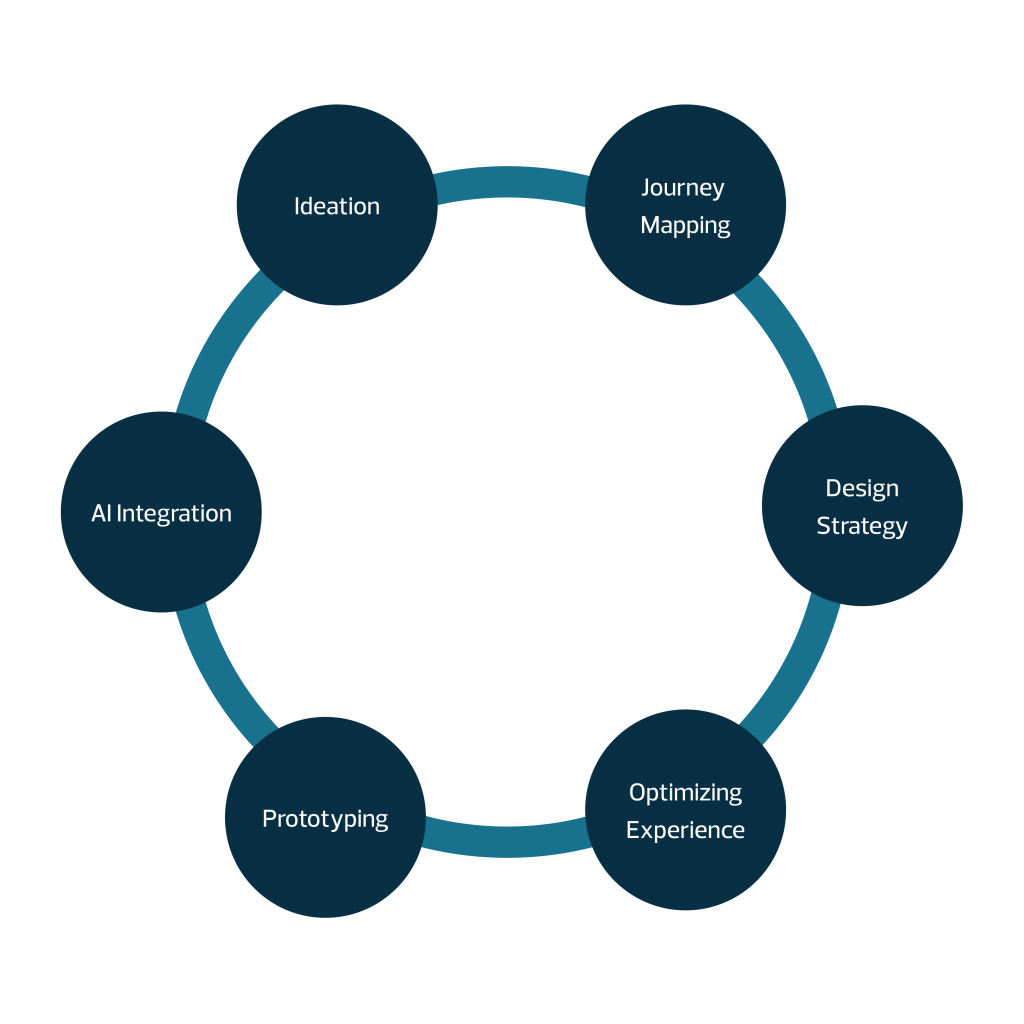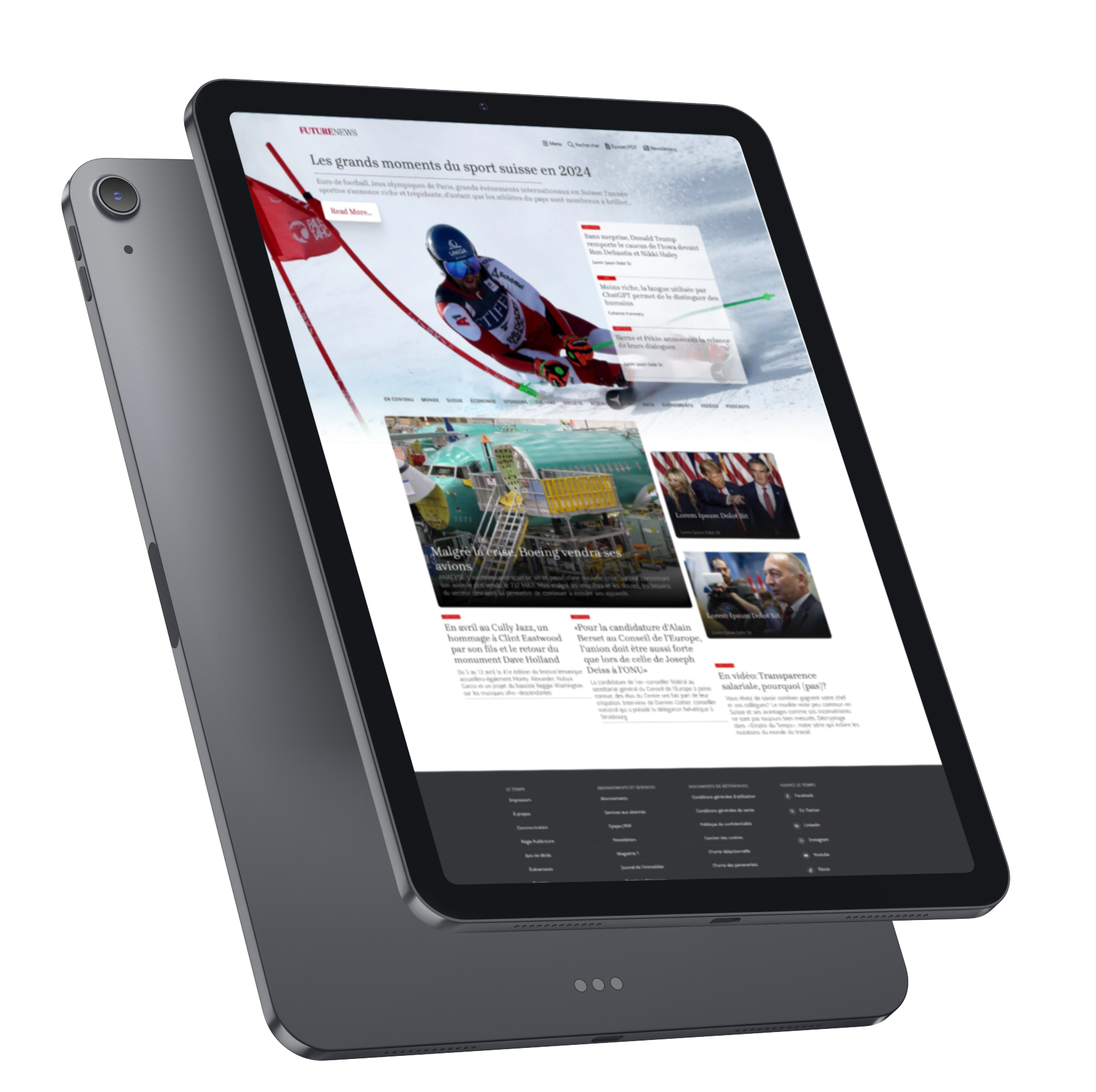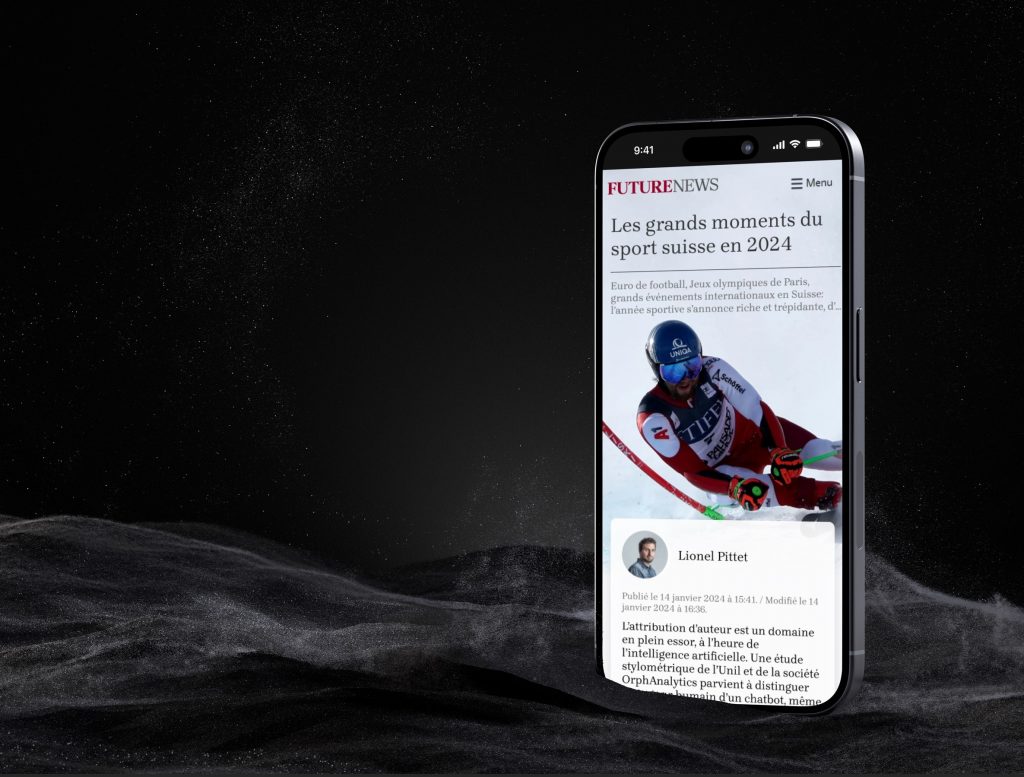A revolution for traditional media

Future News is a cutting-edge digital news platform, leveraging AI to deliver a personalized and interactive news experience. It blends advanced technology with user-centric design, providing tailored content and an intuitive interface.
This innovative approach revolutionizes digital journalism, making news consumption more relevant and engaging for each individual reader.
FutureNews CaseStudy
UX Strategy
Research
Design Process
Implementation
Usability Testing
In this project our goal was to do a complete redesign for FutureNews digital presence, leveraging cutting-edge AI technologies and state of the art UX.
Our primary objective was to build a new type of website interaction, since the development of AI technologies allows us to revolutionize both the frontend interface for readers and the backend editorial processes for journalists.
The centerpiece of this transformation was the introduction of dynamic, personalized news pages, generated in real time and on-the-fly for each individual reader, offering an unprecedented level of content personalization.
Embracing the future of journalism, our vision is to craft a digital news experience that's not just informative but deeply personalized and intuitive. The integration of AI in our platform is a game-changer, ensuring every reader's encounter with news is as unique as their interests
Jordan Gartenberg, Co-Founder, FutureNews.
Auto-Generated Layouts
Flexible
Personalized

Ideation and Concept Development
The initial phase involved brainstorming sessions with a team of UX designers, AI experts, and journalists, via a design sprint workshop. The primary focus was to create a user-centric design that seamlessly integrates AI. The team proposed various concepts, with the most promising being a modular design allowing for dynamic content arrangement based on AI-driven user preferences.
User Journey Mapping
To understand how users would interact with the new design, we developed user journey maps. These maps highlighted key interactions, such as logging in, browsing articles, and receiving personalized content. We identified critical touchpoints where AI could enhance the user experience, such as in content recommendation and adaptive layout changes
Specific Design Strategies
To enhance user engagement, we employed an innovative “Content-first” design approach. This included a minimalistic layout to reduce cognitive load and strategically placed interactive elements to promote user exploration.
We used progressive disclosure techniques to reveal more in-depth content as users engage with articles, ensuring a clutter-free yet informative experience.
Optimizing Mobile User Experience
Recognizing the growing trend of mobile news consumption, we prioritized a responsive design that maintains consistency across devices. Key features like the AI-driven content feed and interactive elements were optimized for mobile interfaces, ensuring smooth and accessible user experiences on smaller screens.
Wireframing and Prototyping
Prototypes were then created in Figma, offering an interactive experience. We tested several prototypes, each varying in the degree of personalization and AI integration, to gauge user response and gather feedback.
AI Integration in Design
Ai integration was central to the design process. The team worked closely with AI specialists to ensure that the AI-driven features, such as the personalized news feed and AI-generated content, were intuitive and seamlessly embedded into the user interface, as well as technically feasible. The design aimed to make these complex technologies appear simple and accessible to the users we tested with, on the roll of our usability tests.
Research and Analysis
Lack of Personalization in Digital News:
- Traditional digital news platforms often present the same content to all users, disregarding individual preferences and interests. Headlines and cover news are selected by journalists, instead of taking in consideration the preferences of readers.
- The challenge was to create a more engaging, relevant, and personalized news experience for each user.
Inefficiencies in Editorial Processes.
- Journalists traditionally spend a significant amount of time writing and editing articles, which can limit their capacity for investigative and in-depth reporting.
- The project aimed to streamline the content creation process by integrating AI, allowing journalists to focus on higher-level tasks like fact sourcing and verification.

Solutions provided by Brandly:
- Dynamic Personalization Engine: Utilizing AI to analyze user behaviour and preferences, creating a personalized news content (articles), and news feed for each reader.
- AI-driven Article Generation: Implementing AI tools to assist in content creation, using input from journalists to generate insightful, relevant articles, thus saving time and resources in the newsroom.
Key Innovations
01 / Dynamic Personalization Engine:
02 / AI-driven article generation:
AI brought a significant breakthrough to content creation. Journalists input key facts into specialized databases, that is used by the AI as a foundation to generate insightful articles.
This frees up a significant amount of time from journalists, since their main task is now fact sourcing and verification instead of writing and editing. The AI is also capable of sourcing and combining additional information from news agencies and external news services, understanding relationships between different facts and cultural context. As a result, every article is different for every reader, as it is built based primarily on facts, but also on user preferences and interests.
03 / Focused User Interface:
04 / Advanced Backend System:
The backend of the newspaper was overhauled to support the AI-driven article generation and personalization engine. This involved developing a robust and scalable infrastructure capable of handling large volumes of data, real-time content generation, and personalization algorithms.
Customer Journey
01: First Interaction / Sign-Up
Touchpoint: Alex discovers FutureNews through social media.
Emotion: Curiosity
Thoughts: “This looks like a modern way to read news.”
Opportunity: Make the first impression engaging and informative.
02: Initial Preferences Setup
03: First Use Experience<
Touchpoint: Alex is prompted to select topics of interest and preferred news sources.
Emotion: Engagement
Thoughts: “I like that I can customize my news feed.”
Opportunity: Provide a guided and easy-to-use interface for preference selection.
04: Regular use and Interaction
Touchpoint: Alex browses through the personalized news feed.
Emotion: Satisfaction
Thoughts: “The articles are really tailored to my interests.”
Opportunity: Ensure the AI-driven personalization is effectively showcasing relevant content.
05: Feedback / Support
Touchpoint: Daily use of Future News for updates.
Emotion: Dependance
Thoughts: “Future News has become my go-to for news.”
Opportunity: Continuously update and refine AI algorithms based on ongoing user interactions.
06: Long-term Engagement
Touchpoint: Alex uses the feedback feature to suggest improvements.
Emotion: Invested
Thoughts: “I hope they consider my suggestions.”
Pain point: Uncertainty if feedback is considered.
Opportunity: Establish a responsive feedback system, making users feel heard.
07: Final Loop
Touchpoint: Continued use and exploration of additional features, like in-depth articles.
Emotion: Loyalty
Thoughts: “This platform keeps getting better.”
Opportunity: Introduce new features and updates to keep the platform dynamic and engaging.
Impact
A) Enhanced User Engagement
B) Content Diversity and Quality
C) Operational Efficiency
D) Positive Reader Feedback
Lessons Learned
01
The importance of user-centered design in creating AI-driven platforms.
02
Balancing AI automation with human journalistic integrity.
03
Addressing privacy concerns and ethical considerations in AI applications.
Results
Enhanced User Engagement:
Post-launch metrics show a 24% increase in user engagement. The average session duration rose by 29%, and daily active users increased by 22%. These improvements are attributed to the personalized content delivery, which kept users engaged and returning for more tailored news experiences.
Content Diversity and Quality:
With AI-driven article generation, the range of topics covered expanded by 41%. The AI’s ability to source and synthesize information from various agencies led to deeper insights and a more diverse array of viewpoints in articles. The quality of content was maintained, with a 95% positive sentiment in automated content quality assessments.
Guardrails were implemented to ensure editorial coherence and criteria
Operational Efficiency:
The introduction of AI in content creation streamlined the editorial process. Journalists spent 50% less time on routine content generation, allowing more focus on investigative and in-depth reporting. The backend system’s efficiency increased, reducing the time to publish breaking news by 60%.
Positive reader feedback:
Initial feedback from readers was overwhelmingly positive. Surveys indicated that 85% of users found the personalized content more engaging, and 78% appreciated the improved user interface. The unique, tailored news experience was highlighted as a key factor in increased reader satisfaction.

Challenges and Solutions
The redesign of Future News using AI technologies presented several challenges, which were met with innovative solutions. Here we outline the primary challenges and the approaches taken to resolve them.
User Adoption:
Challenge: Some users were initially skeptical about AI-generated content, fearing a loss of journalistic integrity and authenticity.
Solution: We launched an educational campaign highlighting the role of AI in enhancing, not replacing, journalistic content. User-friendly guides explained how AI works in sourcing and tailoring content, reassuring users about the credibility and quality of the news.
Data Privacy and Ethics:
Challenge: Concerns about data privacy and ethical use of AI were paramount, given the personalized nature of content.
Solution: We adopted a transparent privacy policy, clearly communicating how user data is used. Users were given control over their data, with options to customize their privacy settings. Regular audits and compliance checks ensured ethical AI practices.
Continuous Improvement and Iteration:
Challenge: Ensuring the platform remained cutting-edge and adapted to changing user needs and technological advancements.
Solution: We implemented a continuous feedback loop, incorporating user feedback into regular updates. A dedicated R&D team was tasked with staying abreast of AI advancements, ensuring the platform evolves with emerging technologies.